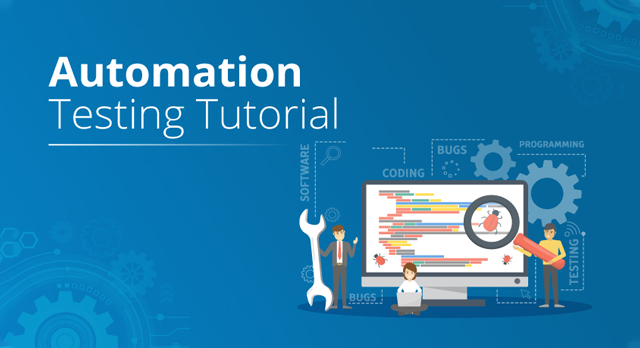From Manual to Automated Testing: A Comprehensive Overview to Transitioning Efficiently and Successfully
In the world of software testing, the change from manual to automated procedures has become an increasingly vital change for organizations seeking to improve performance and precision in their testing techniques. The journey from manual to automated screening is not without its challenges, yet when approached purposefully and with a clear strategy in mind, the benefits can be considerable.
Benefits of Automated Checking
Automated screening provides numerous benefits, boosting efficiency and precision in software application advancement processes. One main advantage is the considerable reduction in testing time. Automated examinations can be run at the same time on multiple tools and running systems, drastically quickening the testing phase contrasted to hand-operated testing. This boosted effectiveness enables for faster comments on the high quality of the software program, making it possible for programmers to identify and deal with issues quickly.
Moreover, automated testing ensures a higher degree of precision in discovering flaws. Considering that automated examinations adhere to predefined scripts, human error is reduced, resulting in more dependable test results. Consistency in screening is additionally boosted, as automated examinations carry out the exact same steps precisely each time they are run. This uniformity is critical in making certain that all capabilities of the software program are completely checked, minimizing the possibility of undiscovered bugs sliding with to production.
Selecting the Right Devices

First of all, analyze your demands and purposes. Understand the scope of your project, the innovations involved, and the ability of your team. This analysis will aid you identify the abilities and features you call for in your screening tools.
Secondly, consider the compatibility of the tools with your existing procedures and systems. Seamless integration with your existing software application development lifecycle is vital to make certain a smooth transition to automation.
Additionally, evaluate the scalability and versatility of the devices. As your testing requires evolve, the tools need to be able to adapt and fit adjustments properly.
Last but not least, element in the support and community around the devices. When executing automated testing, durable support and an energetic user neighborhood can provide useful resources and help. By carefully taking into consideration these elements, you can pick the right tools that line up with your requirements and set the phase for a successful shift to automated screening.
Writing Reliable Examination Scripts

When crafting test manuscripts, it is vital to consider the certain requirements of the software program being evaluated and ensure that the scripts resolve all important like it functionalities. Clear and detailed calling conventions for examination scripts and examination cases can improve readability and maintainability. In addition, incorporating mistake handling devices within the test manuscripts can aid in identifying and attending to issues immediately.
In addition, organizing test manuscripts into modular components can enhance reusability and scalability, reducing redundancy and enhancing performance in test script upkeep. Normal reviews and updates to evaluate scripts are critical to equal progressing software program requirements and functionalities. By complying with these concepts, testers can develop durable and effective test scripts that add dramatically to the success of automated testing processes.
Integrating Automation Into Workflows
By flawlessly integrating automated screening tools like Selenium or Appium right into the software application growth lifecycle, teams can accomplish faster feedback on code adjustments, leading to quicker bug discovery and resolution. This integration enables for continual testing throughout the growth process, making sure that any problems are recognized early on, resulting in greater software program high quality. Correct combination of automation devices requires partnership in visit here between development, testing, and procedures groups to establish a unified process that maximizes efficiency and efficiency in delivering top notch software products.
Making Sure a Smooth Change
Successfully transitioning to automated testing includes thorough planning and cautious execution to decrease disruptions and maximize efficiency in the software application advancement procedure - automation testing. To make certain a smooth change, it is important to start by performing a thorough assessment of the current testing processes and identifying locations where automation can bring one of the most substantial advantages. Involving with all stakeholders beforehand while doing so, consisting of programmers, testers, and task supervisors, is critical for amassing assistance and buy-in for the automation campaign
Interaction is vital throughout this change stage. Clear interaction of the goals, benefits, and expectations of automated screening aids to take care of any type of resistance or issues that may arise. Additionally, providing ample training and sources for employee to upskill in automation tools and techniques is essential for making certain an effective shift.

Final Thought
In verdict, transitioning from manual to automated testing uses many advantages, consisting of raised performance and integrity. By picking the appropriate tools, writing reliable examination manuscripts, and incorporating automation flawlessly right into operations, companies can ensure a successful and smooth change. It is important to embrace automation as a valuable property in software program testing processes to improve overall quality and performance.
In the world of software application testing, the shift from guidebook to automated procedures has actually ended up being a progressively important transition for organizations looking for to improve efficiency and precision in their screening methods. Automated examinations can be run all at once on several devices and operating systems, significantly speeding up Full Article the testing stage compared to hand-operated screening. Consistency in screening is likewise improved, as automated examinations carry out the same actions exactly each time they are run.To ensure the effective application of selected screening tools, the production of efficient examination scripts plays a crucial duty in verifying the functionality and efficiency of automated processes - automation testing. By adhering to these principles, testers can develop robust and reliable test manuscripts that contribute substantially to the success of automated testing procedures
Comments on “Automation Testing Frameworks: Simplifying Complex Testing Circumstances”